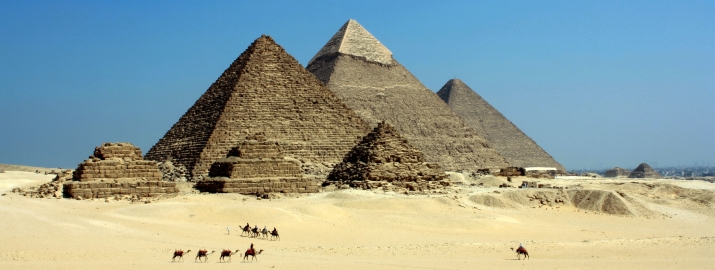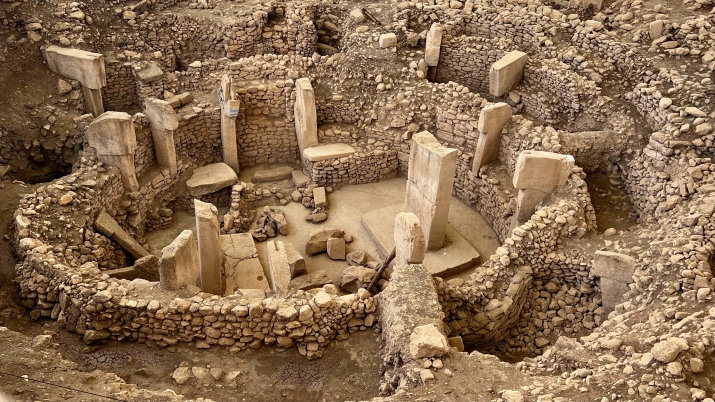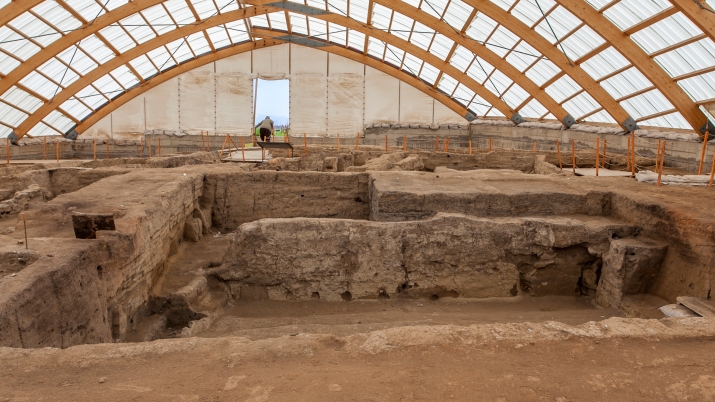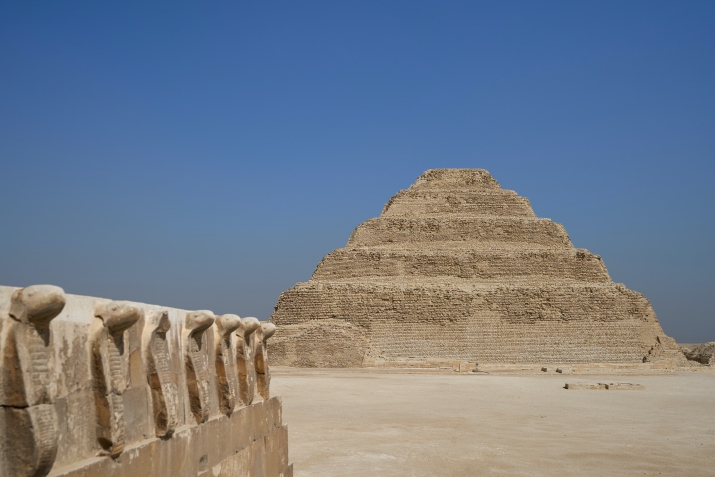
13 Oldest Buildings in the World
Table of Contents
Do you know what year the oldest building in the world was built? Well, do you know the name of the first pyramid built? Or do you know the place of worship people constructed out of stones weighing thousands of tons?
Our ancestors were unaware that they started humanity’s journey on earth while building history. The oldest buildings dating back to the beginning of civilization are the actual evidence that has survived to this day. We learn about the way of worship, economy, culture, and lifestyle of people centuries ago, thanks to many structures still standing today.
Religious sites, tombs, palaces, and settlements in this list are the oldest structures in human history. We will dive into these ancient buildings to learn how our ancestors lived thousands of years ago. We will have a look at how these buildings were built, what they were used for, and when they were built. Here's everything you need to know about the world's oldest buildings.
World’s Oldest Structures
1. Tell Qaramel
Date of Construction: 11000 BC to 9670 BC
Location: Aleppo Governorate, Syria
Tell Qaramel is located in the valley of a river that was an important trade route. According to some archaeologists, Tell Qaramel is the oldest known structure. It is known that there were settlements in the region from the Pre-Pottery Neolithic period to the Hellenistic period. It contains the remains of the five oldest known round towers in the world. The structures unearthed in Tell Qaramel, where excavations have not been completed, show that the site dates back to earlier times. But it’s believed to date back to almost the same period as Gobekli Tepe in Turkey.
2. Gobekli Tepe
Date of Construction: 9500 BC to 8000 BC
Location: Şanlıurfa Province, Turkey
Gobekli Tepe —meaning belly hill in Turkish, the archaeological site of a religious building in Southeast Turkey, is known to be the oldest structure ever found. The site consists of more than 200 columns in about 20 circles. There are many animal carvings and drawings on some of the columns in Gobekli Tepe, such as lion, ox, vulture, and scorpion. In addition, each of these pillars is about six meters tall and weighs more than seven tons. Gobekli Tepe gives an idea about the life and beliefs of the people of that period. However, it is still unknown why Gobekli Tepe, which was used as a place of worship by hunter-gatherers, was buried and rebuilt and how much workforce was used.

3. Tower of Jericho
Date of Construction: 8000 BC
Location: West Bank, Palestine
The Tower of Jericho, considered the world’s first monumental architectural work and the first stone building, was built in the Pre-Pottery Neolithic period. It was built with an interior staircase of 22 steps made of unpeeled stones. The conical tower, about nine meters in diameter, is 8.5 meters high. It is estimated that the Tower of Jericho was built in about 11,000 days. It is still a mystery why the Tower of Jericho, one of the oldest known structures, was built.
4. Catalhoyuk
Date of Construction: 7400 BC to 5700 BC
Location: Konya Province, Turkey
Catalhoyuk, a Neolithic Age and Chalcolithic Age settlement, consists of two side-by-side mounds extending to the east and west. East Mound was a Neolithic Age city for a very long time; West Mound shows characteristics of the Chalcolithic Age. The fact that there has been a settlement in the same geography for more than 2000 years shows the transition from village living to urban life. The settlement in Catalhoyuk consists of adjacent houses, which are entered through the roofs. An average of 8,000 people engaged in agriculture and animal husbandry lived in Catalhoyuk.

5. Khirokitia
Date of Construction: 5800 BC to 3000 BC
Location: Larnaca, Cyprus
Khirokitia, an ancient settlement on the island of Cyprus, means “Pig Cradle”. The history of Khirokitia, one of the essential and well-preserved settlements in the Eastern Mediterranean, dates back to the Neolithic Age. The settlement in Khirokitia consisted of houses with flat stone roofs, hearths, and mud bricks built around a small courtyard. Defensive walls protected the entire residential area. This layout is evidence of an organized and functional society.
6. Perperikon
Date of Construction: 5000 BC
Location: Kardzhali Province, Bulgaria
Perperikon, the largest megalith area of the Balkans, is located on a rocky hill in today’s Kardzhali city. While human activities on the hill date back to the Bronze Age, the remains on the ground are believed to belong to the Early Iron Age. There are also structures from the Roman Period. The site is thought to have hosted the Temple of Dionysus in the Classical Age. It is also known as the place where Medokos declared himself King of Thrace in 424 BC. Remains of an ancient architectural complex have emerged in Perperikon, which has been destroyed and rebuilt many times throughout history.
7. Cairn of Barnenez
Date of Construction: 4800 BC
Location: Brittany, France
The first part of the monument was completed between 4850 BC and 4250 BC, while the second part was completed between 4450 BC and 4000 BC. Made in two parts, the Barnenez consists of 11 gateway tombs built along the interior. Built on a hill overlooking the English Channel, Barnenez is approximately 72 meters long, 25 meters wide, and eight meters high. The monument decorations feature idol crests, dotted axes, stones, and V-shaped engravings. Barnenez is one of the largest megalithic mausoleums and one of the oldest known structures in Europe and the world.
8. Ġgantija Temples
Date of Construction: 3600 BC to 3200 BC
Location: Xagħra, Gozo, Malta
The oldest of the Megalithic Temples in Malta, the Ġgantija Temples are one of the most mysterious archaeological sites in the world. Consisting of two temples, Ġgantija is the oldest known religious building after Gobekli Tepe. The name is derived from the Maltese word ġgant, meaning giant, as the Ġgantija Temples are associated with a race of mysterious giants. Although it is not known exactly what the temples were built for, archaeologists have found traces of animal sacrifices used in rituals.
9. Tarxien Temples
Date of Construction: 3600 BC to 2500 BC
Location: Tarxien, Malta
Consisting of four temples, the Tarxien Temples are the oldest of the Megalithic Temples of Malta. Most of the easternmost part, known as the oldest temple, has not survived. Most of the other three temples have been rebuilt. While the East Temple and the South Temple were built in classical style like the others, the Central Temple stands out for its unique design. There are enormous statues, animal reliefs, and spirals in the Tarxien Temples, where the most striking examples of prehistoric art are found. It is thought that the temples were built for animal sacrifice rituals. Also, archaeologists who found human remains assume they were used as tombs during the Bronze Age.
10. Shunet el-Zebib
Date of Construction: 2750 BC
Location: Abydos, Egypt
Shunet el-Zebib, one of the oldest mud-brick buildings in the world, is also among the oldest stone structures in Egypt. The building is dedicated to King Khasekhemwy as a royal monument. Shunet el-Zebib consists of two main parts: the king’s tombs and the worship area reserved for his followers. The importance of the structure comes from being the forerunner of the Egyptian pyramids. The Djoser Pyramid in Saqqara is the first pyramid built under the influence of Shunet el-Zebib.
11. Pyramid of Djoser
Date of Construction: 2670 BC to 2650 BC
Location: Giza Governorate, Egypt
The Pyramid of Djoser, built in the style of the Step Pyramid, is the earliest example of an Egyptian stone structure, as well as being the first pyramid built by the Egyptians. The iconic Djoser Pyramid is a revolutionary work in terms of royal tombs and stone architecture. Egyptian elites and royalty were formerly buried in mastabas, meaning cedar. This rectangular tomb structure was used as a pile in the Djoser Pyramid. Besides creating a gradual effect, it has been a great innovation.

12. Tumulus of Bougon
Date of Construction: 4700 BC to 3500 BC
Location: Brittany, France
The Tumulus of Bougon, located in western France, is a group of mounds dating back to the Neolithic Age. It is a site that was built over 1200 years ago. In addition, the Tumulus of Bougon is one of France’s oldest examples of megalithic architecture. The most important feature of the Tumulus of Bougon, which consists of five separate mounds, is that each mound has different architectural styles. These mounds generally consist of circular mausoleums made of stone and earth. The largest of the mounds, among the oldest examples of tombs, is approximately 72 meters.
13. Knap of Howar
Date of Construction: 3600 BC
Location: Papa Westray, Orkney, Scotland
Knap of Howar, one of the oldest buildings in the world, is believed to be the oldest preserved stone house. Discovered by erosion in the 1930s, Knap of Hower is a Neolithic structure consisting of two stone houses. After excavations, archaeologists found that a passage connected these two stone houses through their common walls. Archaeologists think that the larger of these two buildings was used as the main house, while the smaller one was used as a barn or workshop. In addition, according to research, Knap of Hower was built on an older building. So, the site is thought to date back to earlier than 3600 BC.
Bottom Line: Oldest Buildings in the World
The world’s oldest buildings hide many facts about our ancestors. They offer a lot of information about cultures, ways of life, religious beliefs, ways of worship, and more. They also reveal the evolution of humanity, step by step, from the oldest known building in the world to now.
Many subjects remain mysterious, from the place of worship people built by bringing together tons of stones in Gobekli Tepe to how the Egyptian pyramids were built. Despite this information, which is still not revealed, the oldest buildings in the world are documents of human history.
This article has included many structures that can still survive today. The fact that these structures have survived for hundreds of years is inspiring even for today’s architecture. We hope these surviving structures will be better preserved and shed light on the future! Hope you’ll be able to visit them in person!
Frequently Asked Questions About Oldest Buildings in the World
What is the oldest building in the world still standing?
Gobekli Tepe is the oldest surviving building in the world, located in Southeastern Turkey. The history of the building dates back to 9500 BC - 8000 BC. Gobekli Tepe, known to have been built in the Neolithic Age, is the oldest religious building.
Is Stonehenge the oldest structure in the world?
Stonehenge dates back to 3000 BC. With a history dating to 3600 BC, the Malta Megalithic Temples are older structures than Stonehenge. Therefore, we can't say that Stonehenge is the oldest structure in the world. Check out our top historical places article for further reading.
What is the oldest city in the world?
Jericho, a Palestinian city in the West Bank, is believed to be the oldest city in the world. Archaeologists have uncovered the remains of more than 20 settlements dating back to 9000 BC. The water resources surrounding and inside the city are the most important reason Jericho is one of the first settlements.
What is the oldest country?
Frankly, the question of the oldest country in the world does not have a clear answer. Indisputably, we can mention several ancient civilizations. There are countries we can talk about geographically and culturally, even if it does not mean the country today.
The oldest countries in the world are generally centered in Africa, the Middle East, and Asia. The world's oldest countries are India, China, Egypt, Iran, Japan, San Marino, Armenia, and Ethiopia. Besides, Greece is thought to be the oldest country in Europe. Athens is considered the oldest city in Europe.

